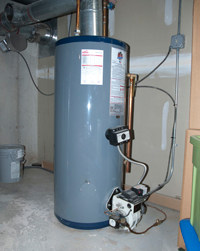The article down the page pertaining to Tips For Maintaining Your Hot Water Heater is exceptionally interesting. Check it out for your own benefit and see what you think about it.

Hot water is necessary for everyday comfort, whether it's for a rejuvenating shower or washing dishes. To guarantee your warm water system runs successfully and lasts much longer, normal upkeep is vital. This write-up offers practical pointers and understandings on just how to keep your home's warm water system to prevent disruptions and costly repairs.
Introduction
Maintaining your home's hot water system might seem daunting, yet with a couple of basic steps, you can guarantee it runs efficiently for many years to find. This guide covers everything from recognizing your warm water system to do it yourself upkeep suggestions and knowing when to hire specialist assistance.
Significance of Maintaining Your Hot Water System
Normal upkeep not only extends the lifespan of your warm water system however likewise ensures it runs effectively. Overlooking maintenance can bring about lowered effectiveness, higher power expenses, and even premature failing of the system.
Indications Your Hot Water System Demands Upkeep
Knowing when your warm water system requires attention can prevent significant problems. Look out for indicators such as inconsistent water temperature, weird noises from the heater, or corroded water.
Comprehending Your Warm Water System
Prior to diving into upkeep tasks, it's helpful to recognize the fundamental parts of your warm water system. Generally, this consists of the hot water heater itself, pipes, anode poles, and temperature controls.
Month-to-month Maintenance Tasks
Normal regular monthly checks can help capture minor problems prior to they intensify.
Flushing the Hot Water Heater
Purging your water heater removes debris accumulation, improving performance and extending its life.
Checking and Changing Anode Rods
Anode poles avoid deterioration inside the storage tank. Examining and changing them when worn is essential.
Inspecting and Readjusting Temperature Settings
Readjusting the temperature setups makes sure optimal efficiency and security.
DIY Tips for Upkeep
You can carry out numerous maintenance jobs yourself to keep your warm water system in top problem.
Checking for Leakages
Routinely evaluate pipes and links for leaks, as these can cause water damage and higher expenses.
Examining Pressure Alleviation Valves
Examining the pressure relief valve guarantees it operates properly and stops excessive pressure buildup.
Insulating Pipelines
Shielding hot water pipes decreases warmth loss and can save power.
When to Call a Professional
While DIY upkeep is useful, some issues need specialist proficiency.
Complex Problems Needing Expert Aid
Instances include major leakages, electric troubles, or if your water heater is regularly underperforming.
Routine Professional Maintenance Advantages
Expert upkeep can consist of comprehensive evaluations, tune-ups, and making sure conformity with safety and security criteria.
Conclusion
Regular maintenance of your home's warm water system is crucial for performance, long life, and price financial savings. By adhering to these tips and knowing when to seek professional help, you can guarantee a reputable supply of hot water without unforeseen interruptions.
How to Maintain an Instant Hot Water Heater
Before tinkering with your hot water heater, make sure that it’s not powered on. You also have to turn off the main circuit breaker and shut off the main gas line to prevent accidents. Also turn off the water valves connected to your unit to prevent water from flowing into and out of the appliance. 2. When you’re done, you have to detach the purge valves’ caps. These look like the letter “T” and are situated on either side of the water valves. Doing so will release any pressure that has accumulated inside the valves while at the same time avoid hot water from shooting out and burning your skin. 3. When the purge valves’ caps are removed, you have to connect your hosing lines to the valves. Your unit should have come with three hoses but if it didn’t, you can purchase these things from any hardware or home repair shops. You can also get them from retail stores that sell water heating systems. Read the user’s manual and follow it to complete this task properly. When the hosing lines are connected, open the purge port’s valves. 4. You should never use harsh chemical cleaners or solutions when cleaning your unit. Make use of white vinegar instead. It should be undiluted and you’ll probably use about 2 gallons. 5. Now flush your water heater. This task should probably take about 40 minutes. We can’t give you specific directions for this because the procedure is carried out depending on the type, model and brand of your heater. With that being said, refer to the user’s manual. 6. When you’re done draining the unit, you have to turn off the purge port valves again. Remove the hosing lines that you earlier installed on each of the water valves. Put the valve caps (purge port) back in their respective places and be very careful so as not to damage the rubber discs that are found inside these caps. 7. Now that everything’s back in place, check your user’s manual again to find out how to reactivate your water heating system. 8. Once it is working, turn one of your hot water faucets on just to let air pass through the heater’s water supply pipes. Leave the tap on until water flows smoothly out of it. https://www.orrplumbing.com/blog/2014/september/how-to-maintain-an-instant-hot-water-heater/

Hopefully you liked our post on Tips on Maintaining a Water Heater. Many thanks for taking time to read through our short article. Remember to take a moment to distribute this blog posting if you enjoyed reading it. Thank you for being here. Come back soon.
Book An Appointment